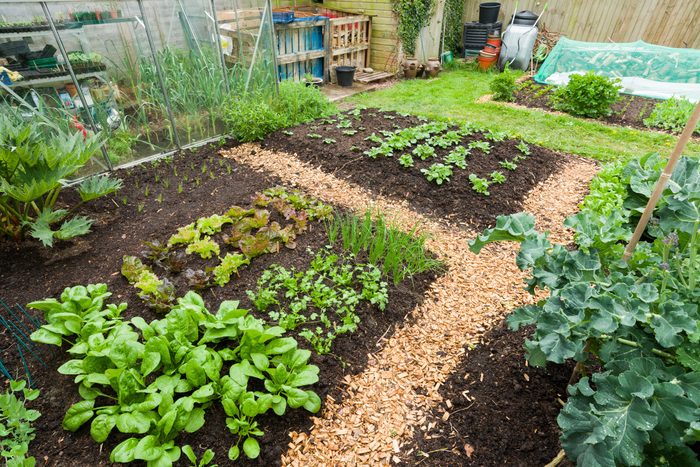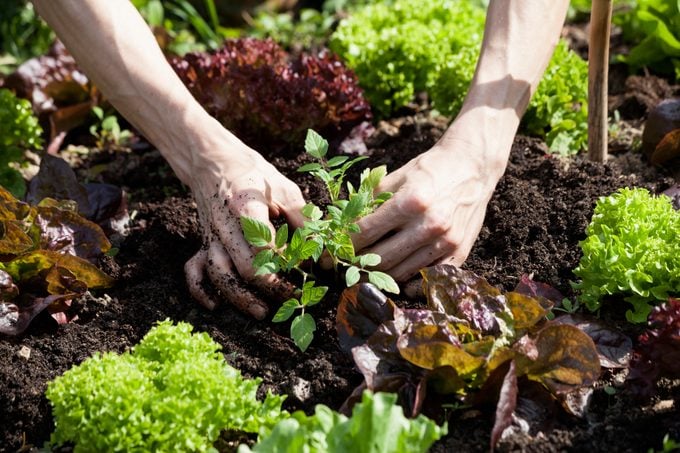Should I Rotate Crops in My Vegetable Garden?
Updated: Feb. 28, 2023

Crop rotation in your vegetable garden sounds like a lot of work. But it's actually an easy practice to follow.
In the earliest days of agriculture, farmers observed some crops grew better in a field where different crops grew the year before. They also learned that growing the same crops every year in the same spot often led to poorer harvests. They used this knowledge to develop crop rotation, which we can apply to our home vegetable gardens.
On This Page
What Is Crop Rotation?
In the vegetable garden, practice crop rotation by changing where you plant each vegetable each season, based on the plant family they belong to. (Botanists group plants together in families based on common characteristics.) You might put sweet corn where you grew green beans the previous year, or squash where tomatoes grew.
There is no set order for crop rotation, though often I plant a legume like beans or peas where I had previously grown sweet corn. That’s because sweet corn requires a lot of nitrogen to grow well, and legumes improve soil fertility.
Why Is Garden Crop Rotation Important?
Rotating crops in a vegetable garden is important for these reasons:
Reduced insect pests and plant disease
Plant diseases and insect pests often overwinter in the soil. If you plant the same crops in the same spots every year, diseases and pests build up over time because their favorite host plants are always there.
You may notice your tomatoes always have blight, or squash bugs seem to increase each year. Planting crops in different locations slow these down.
Improved soil fertility
Different plants pull different types of nutrients from the soil, and planting the same ones in the same spots means nothing was done to replenish those nutrients. Crop rotation balances out soil fertility. Some plants, like green beans, peas and other legumes, actually add nitrogen to the soil!
How To Plan a Garden With Crop Rotation in Mind

Determine which plant family a crop belongs to and avoid planting anything from that family in that spot for three to four years.
Peppers, eggplant, potatoes and tomatoes are all in the Solanaceae family of plants. All squashes, cucumbers, and pumpkins are in the Cucurbitaceae family. Cabbage, broccoli, kale and radishes are in the Brassicaceae family. So rotating peppers, squash and then cabbage over three years would work.
Keep a record, perhaps in your garden journal, of where you planted each vegetable each year. Use this to plan next year’s garden. Several years of record-keeping will give you a good idea of how to proceed.
What if Your Garden Is Too Small for Crop Rotation?
Many gardens, including mine, are too small to rotate crops. Fortunately, other practices can help us reduce insect and disease build-up and improve soil fertility.
- Remove vegetable plants quickly once they’ve stopped producing. Compost the healthy ones. If you see signs of disease, put them in the trash.
- Plant green beans or peas in spots where heavy-feeding crops sweet corn were grown the year before. These add nitrogen to the soil.
- Sow a cover crop over bare ground.
- Observe how well your vegetables grow. If they’re struggling, consider testing your soil to see which nutrients might be lacking.
Can You Practice Crop Rotation in Container Gardens?
Yes, if you have several large containers.
Keep a record of what you grew in each container and plant crops from different families in them each year. Or you can replace some or all of the potting soil before replanting it.
If you’re replacing just some of the potting soil, remove at least the top six inches or so. Then add new potting soil by mixing it in with the soil still in the container.
